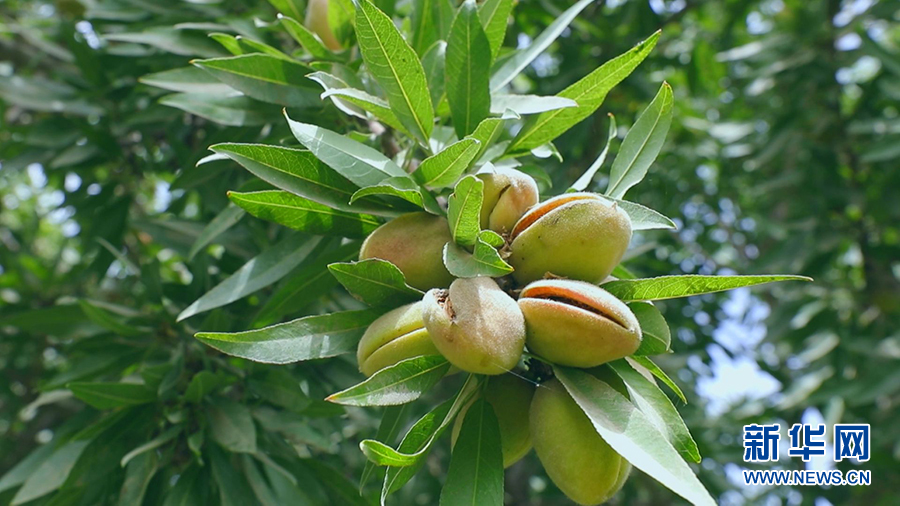New skills see almond growers lift incomes


Almond trees have been grown in Shache county, in the south of the Xinjiang Uygur autonomous region, for more than 1,300 years, but the industry still has great potential because local farmers have recently mastered the latest agricultural skills to improve the quality of the nuts, a farmer and an official said.
Shache, in Kashgar prefecture, is now the largest almond growing base in China. Covering more than 61,500 hectares, the plantations in the county account for more than 95 percent of China's almond growing area.
More than 120,000 people now make a living from almond trees, so the development of the almond industry matters to the livelihoods of about 14 percent of the county's population.
"The quality of the almonds has been significantly improved in the past few years. You can actually see and taste the differences," said Abdullkahar Adil, head of the Saimi almond growing cooperative in Shache.
The almond, known as badam among the locals, was first brought to Shache by merchants traveling on the ancient Silk Road. People then found out that the sunny, natural environment made almonds grown in the county particularly delicious and nutritious.
Previously, most of the farmers' knowledge about taking care of almond trees was passed down from generation to generation. Now, they have agricultural experts on their side to guide them through every process, Abdullkahar said.
Since he set up the cooperative in 2018, the yield per hectare has increased from 1.2 metric tons to 1.5 tons.
"The increased yield means that the farmers can earn more income. The top grower in the cooperative made about 60,000 yuan ($9,300) in 2020," Abdullkahar said.
Despite the COVID-19 epidemic, which has cast shadows on the domestic consumer market, the Saimi Cooperative processed and sold 3,800 tons of almonds last year, 300 tons more than in 2019. Most of the harvest, about 3,000 tons, was sold to other parts of China such as Shanghai, Tianjin and Zhejiang province as Shache almonds have become well-known among health-conscious Chinese consumers.
As the almond business boomed in recent years, the number of farmers in the cooperative grew from eight to 55. Another 20 have expressed interest in joining this year, Abdullkahar said.
Shache's long history of almond growing has given the county a unique advantage in boosting and modernizing its almond product industry, said Zhang Qiang, an agriculture and rural affairs official in charge of developing its almond plantations.
"The county has no plans to expand the plantations this year but will continue to increase yields and improve the quality of the almonds by offering more support in agricultural techniques and policies to the farmers," Zhang said.
Shache plans to produce 94,000 tons of almonds this year, 8,000 tons more than last year, to meet growing demand in the domestic and international markets, Zhang said. Almond products from Shache have been exported to Japan, Pakistan and Russia.
The county also plans to attract more enterprises to make more products with higher added value, such as almond oil and milk, Zhang said.
"Growing almonds is no longer just a tradition for Shache people but a ticket to a better life," Abdullkahar said. "People are now prouder to be almond farmers than ever."
- China warns Japan on rising militarism
- Man rescued 28 hours after start of fire
- Guangzhou shipyard to build two hybrid ferries for New Zealand
- Beijing institute plans to build space data centers
- Deeper global cooperation key for green transition and climate resilience, global leaders say
- Five African lion cubs make debut at Chongqing theme park





































